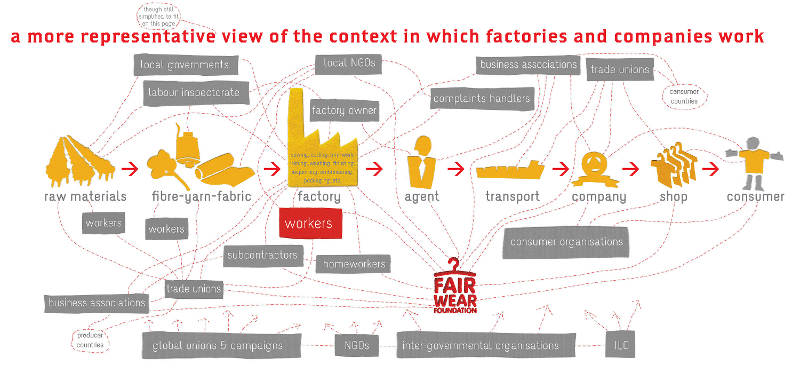![[Fashion High]](http://socialalterations.com/wp-content/uploads/2010/04/Talking-Back-059.jpg)
In our activity “Talking Back” students were asked to ‘talk back’ to fashion magazines, by cutting out images and placing them on a poster board either under the category “OK!” or “NO THANKS.” Students at Balmoral said “NO THANKS!” to this fashion theme.
I recently had the pleasure of stepping in as a guest speaker at Balmoral Jr. Secondary School, in North Vancouver (BC, Canada), to talk responsible fashion consumption with a fantastic group of Grade 10’s (thanks Ms. Thomson!).
Why? We got to talking recently at SA about how many of the resources we’re aggregating for fashion designers/students/educators are easily translated into resources for youth (pre-16). In fact, thanks to groups like Fashioning an Ethical Industry and TRAID (to name just a couple), so many resources on responsible fashion dedicated to students within this age bracket already exist.
Because we want to make sure teachers know where to go to access these great educational tools, we’ve pooled some of our favourites together to present to you what we think is an amazing workshop for Pre-16 students: [Fashion High] Understanding the Impact of your Clothing: An Introduction.
We want to share the experience with you here and give you all the tools you need to run your own workshop. We’ll be uploading a package for the 1 hour workshop I ran at Balmoral, as well as an extended 2 hour version of the same workshop. Like all of our content, these lessons are completely interdisciplinary.
I’ll be stepping back into the classroom at Balmoral soon, so to make sure that this workshop goes as smoothly as possible on your end, I will record some video footage to give you a sneak peak at how it all works together when put into action.
My experience at Balmoral, here in Canada, was a complete success; Not only was I inspired by these students, encouraged at how comfortable they were discussing Human Rights and the environment within the fashion context, I believe that the workshop had a real impact on the students, providing them with tangible solutions to some very big problems.
Stay tuned for more on this.
Here are some images of the workshop:
![[Fashion High]](http://socialalterations.com/wp-content/uploads/2010/04/Talking-Back-066.jpg)























